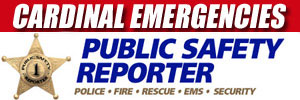There’s no doubt that firefighters have an important yet dangerous job, and they must take care of themselves while on the job. This includes personal protection, as well as tools, which are necessary to do their jobs efficiently. Whether you’re currently a firefighter or on the road to becoming one, this article introduces the essential equipment all firefighters.
Personal Protection
Helmet
Anytime we think about a firefighter, we often picture the big helmet with their department logo on it. This is one of the most important pieces of equipment for firefighters because it protects firefighters from heat, and protects firefighters from falling debris. In addition, many of helmets will have a mask or eye guard attached.
Turnout Jacket and Pants
The big coat and pants are a non-negotiable for firefighters, because they’re double layered to resist heat, protect burning embers, prevent clothes underneath from getting soaked, and wick away any moisture that builds up from sweat.
Boots
Firefighters don’t just waltz into a burning building or other hazard without foot protection. Firefighters need to protect their feet as well. The firefighters’ multiple environments for the variety of calls that are most likely experienced are a major factor in choosing the proper features. Boots may have a non-metallic nylon shank or a steel shank. They must be certified and meet requirements of the NFPA. With thick, fire-grade boots, you can do exactly that.
Gloves
In addition, there are fire-grade gloves that all firefighters wear before entering a building. With flame resistance, heat resistance, cut and puncture resistance, and resistance to liquid penetration; good gloves keep hands protected while working. Gloves are also designed to help prevent chronic or repetitive motion injuries. Gloves must also maximize hand function and grip enhancement.
SCBA
When exposed to smoke or some hazardous gases and vapors firefighters will have to wear Self-Contained Breathing Apparatus (SCBA) tanks on their backs. SCBA allows firefighters to breathe safely while in a smoky building for a limited period of time. In some chemical hazmat incidents, SCBA is not enough protection. Special hazmat teams wear SCBA under completely enclosed hazmat suits in cases of unknown material or known chemicals that can be absorbed via the skin; or when regular SCBA masks don’t protect against hazardous material exposure.
Dust Masks
Dust masks might be used instead of SCBA during overhaul, after the fire is extinguished, when deadly gases are cleared and the smoke has stopped. Firefighters debate whether it is safe to use dust masks during overhaul. Dust masks don’t prevent inhalation of toxic or cancer-causing chemicals in the air. Many firefighters prefer to keep their SCBA on to reduce risks of exposure to carcinogens.
Personal Alert Safety System (PASS)
Remember, firefighters are a team. Firefighters wear a PASS device that is integrated with their SCBA unit. The PASS device activates an audible distress symbol if it does not detect any motion after 30 seconds. That way, crew teammates or Rapid Intervention Team members can locate a firefighter if the PASS alert is activated, and there is no response from the firefighter.
Tools
Flashlight
One of the most essential pieces of equipment all firefighters need is a flashlight. Flashlights can be handheld or can be attached to helmet or turnout coat. Firefighters also use portable lighting, that is easy to move like a large flashlight, but can stand on its own.
Forcible Entry
Firefighters often need to enter a building or home with force. This is when it’s important to have tools like the Halligan Tool, a fire axe, The Pig or a Pro-Bar. A Halligan tool and a flat head axe carried together are known as “The Irons.”
Knife or Multitool
Firefighters also often carry knives, and small clamps or other multi-tools for a variety of functions.
Chocks
Lastly, wooden chocks help for vehicles, but for firefighters, they’re most commonly used to hold doors open.
While there’s plenty more equipment, these tools represent the bare minimum most firefighters will need on the job. Firefighters have a variety of experience and preferences in using tools and personal protection clothing and equipment. Much of the equipment involves years of tradition, but innovations are always welcome for testing and possible implementation.
facebook …
GET ALERTS on Facebook.com/CardinalEmergencies
GET ALERTS on Facebook.com/ArlingtonCardinal
Stay informed with news from PublicSafetyReporter.com’s Emergencies Behind the Scenes Facebook page — Facebook.com/CardinalEmergencies.

